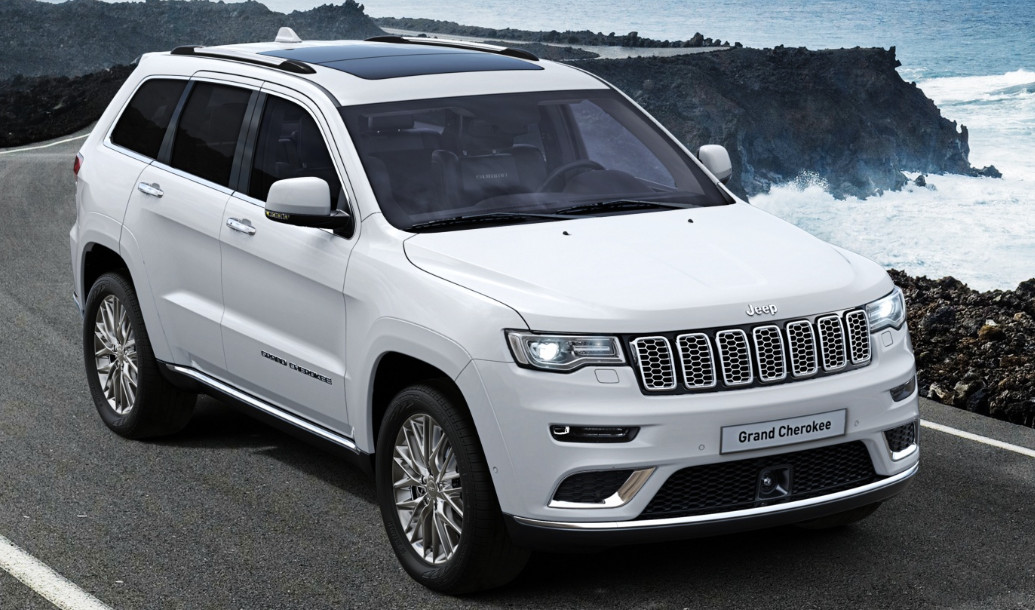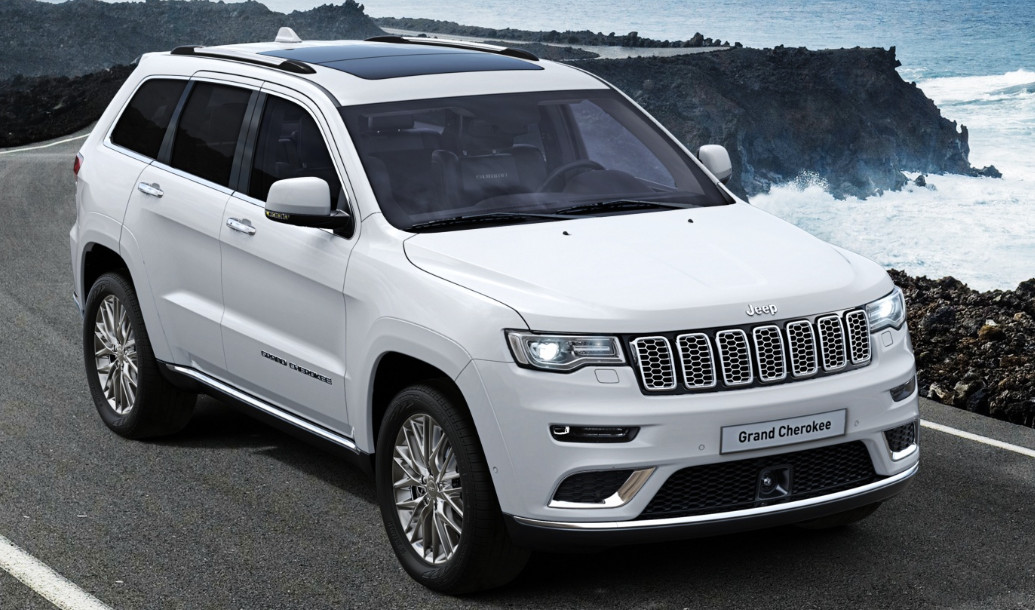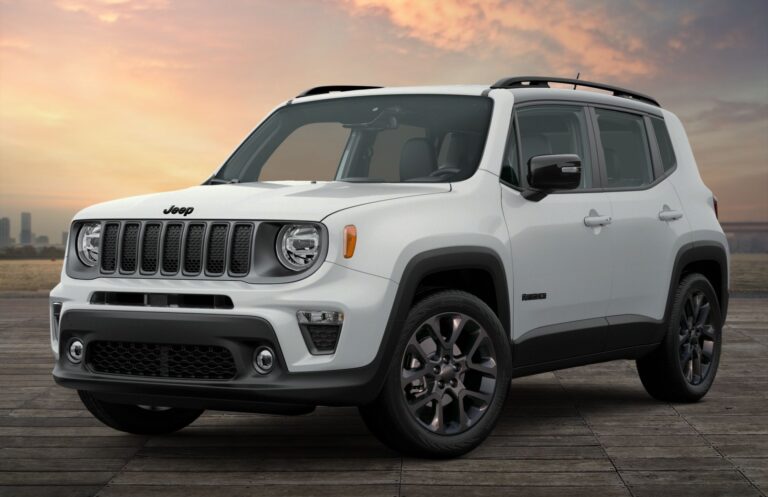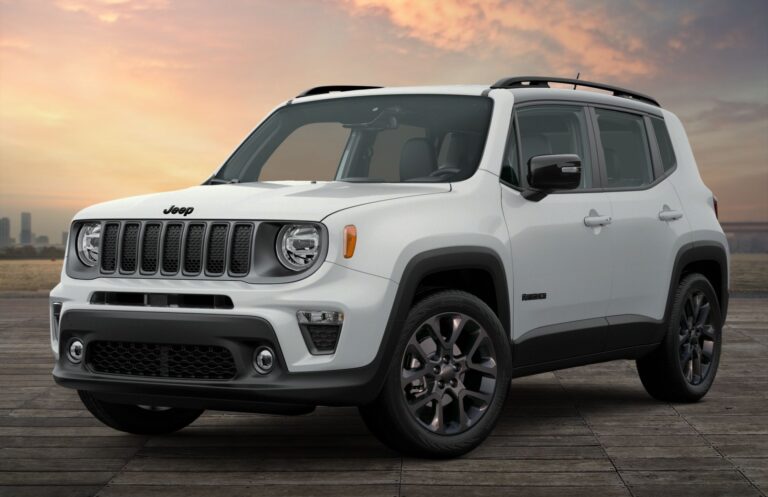Jeep Grand Cherokee Lease Residual: Your Comprehensive Guide to Understanding Value and Payments
Jeep Grand Cherokee Lease Residual: Your Comprehensive Guide to Understanding Value and Payments jeeps.truckstrend.com
Leasing a vehicle has become an increasingly popular option for drivers who enjoy the flexibility of driving a new car every few years without the long-term commitment of ownership. For enthusiasts and families alike, the Jeep Grand Cherokee stands out as a desirable SUV, blending rugged capability with refined comfort. However, navigating the complexities of a lease agreement, particularly understanding the "residual value," is crucial to securing a favorable deal.
The Jeep Grand Cherokee Lease Residual refers to the estimated value of the vehicle at the end of its lease term. It’s a fundamental component of your monthly lease payment, effectively determining how much of the vehicle’s depreciation you will pay for during the lease period. A higher residual value translates to lower depreciation over the lease term, which in turn leads to lower monthly payments. For anyone considering leasing a Jeep Grand Cherokee, comprehending this concept isn’t just helpful – it’s essential for smart financial planning and making an informed decision. This comprehensive guide will demystify the Jeep Grand Cherokee lease residual, exploring its definition, influencing factors, practical implications, and actionable strategies for securing the best possible lease agreement.
Jeep Grand Cherokee Lease Residual: Your Comprehensive Guide to Understanding Value and Payments
What Exactly is Lease Residual Value?
At its core, the lease residual value is the projected wholesale market value of a vehicle at the end of the lease agreement. Expressed as a percentage of the vehicle’s original Manufacturer’s Suggested Retail Price (MSRP), it represents the portion of the vehicle’s value that is not depreciated over the lease term. For instance, if a Jeep Grand Cherokee has an MSRP of $50,000 and a 60% residual value after a three-year lease, its projected value at the end of the lease is $30,000 ($50,000 x 0.60).
In a closed-end lease, which is the most common type, you are only responsible for paying the difference between the vehicle’s MSRP and its residual value, plus interest (known as the money factor), taxes, and fees. Therefore, a higher residual percentage directly translates to a lower amount of depreciation you need to cover, resulting in more attractive monthly payments. This makes residual value a cornerstone of any lease deal, often more impactful than the initial selling price of the vehicle itself.
Key Factors Influencing Jeep Grand Cherokee Residual Value
The residual value of any vehicle, including the Jeep Grand Cherokee, is not static. It’s determined by various factors, often set by the leasing company (captives like Stellantis Financial Services) based on extensive market analysis and predictions. Understanding these influencing factors can help you anticipate better lease terms:
- Model Year and Trim Level: Newer model years generally command higher residual values. Within the Grand Cherokee lineup, certain trim levels traditionally hold their value better due to demand, features, and perceived luxury or capability. Higher trims like the Summit, Overland, or even performance-oriented versions (like the SRT or Trackhawk historically) often have stronger residuals than base models like the Laredo, assuming they are well-maintained.
- Mileage Allowance: Lease agreements specify an annual mileage limit (e.g., 10,000, 12,000, or 15,000 miles). The lower the mileage allowance, the higher the residual percentage, as less wear and tear is expected. Exceeding these limits incurs penalties, which can significantly impact the effective cost of your lease.
- Lease Term Length: Shorter lease terms (e.g., 24 or 36 months) typically have higher residual percentages compared to longer terms (e.g., 48 or 60 months). This is because the vehicle experiences less depreciation over a shorter period.
- Vehicle Condition and Maintenance: While a future projection, the expectation of excellent maintenance and good condition plays a role. A well-maintained vehicle with a clean service history is inherently more valuable.
- Market Demand and Economic Conditions: The overall popularity of the Jeep Grand Cherokee in the used car market, current economic trends, fuel prices, and even interest rates can influence residual values. Strong demand for a particular model tends to support higher residuals.
- Optional Features and Packages: Certain highly desirable options or packages (e.g., advanced safety features, premium sound systems, panoramic sunroofs, specific off-road packages) can enhance a Grand Cherokee’s desirability in the used market, potentially boosting its residual value.


Why Jeep Grand Cherokee Residual Value Matters to Your Wallet
The impact of residual value on your lease goes beyond just monthly payments; it affects the entire financial landscape of your leasing experience:
- Direct Impact on Monthly Payments: This is the most immediate and significant effect. A higher residual value means you’re financing a smaller portion of the vehicle’s MSRP. For example, if a $50,000 Grand Cherokee has a 55% residual, you’re paying for $22,500 in depreciation. If it has a 60% residual, you’re only paying for $20,000 in depreciation, leading to lower monthly costs.
- End-of-Lease Buyout Price: If you decide to purchase your Grand Cherokee at the end of the lease, the buyout price is pre-determined by the residual value stated in your contract. A higher residual value means a higher buyout price, which might be a disadvantage if you intend to buy. Conversely, if the car’s market value is higher than the residual, you’ve essentially locked in a good deal on the purchase price.
- Total Lease Cost: Understanding the residual helps you compare the true cost of different lease offers. A seemingly low monthly payment might be accompanied by a very low residual, indicating you’re paying for a lot of depreciation.
- Avoiding Negative Equity: Unlike financing a purchase, where you can easily find yourself owing more than the car is worth, a closed-end lease’s residual value protects you from this. You’re not responsible for any additional depreciation beyond the agreed-upon amount, even if the car’s market value plummets.
Navigating Your Jeep Grand Cherokee Lease Agreement: Finding the Residual
When reviewing a Jeep Grand Cherokee lease agreement, the residual value will be clearly stated. It’s typically presented as a percentage of the MSRP and as a specific dollar amount. Look for sections detailing the "Residual Value," "Purchase Option Price," or "Lease-End Value." It’s critical to scrutinize this figure, alongside the MSRP, lease term, annual mileage, and the "money factor" (the interest rate equivalent for a lease). These components collectively determine your monthly payment.
Maximizing Your Jeep Grand Cherokee’s Residual Value (and Minimizing Costs)
While you can’t negotiate the percentage of the residual value set by the leasing company, you can take proactive steps to ensure your Grand Cherokee maintains its condition and aligns with the lease terms, thereby minimizing potential end-of-lease costs and maximizing its actual market value.
- Diligent Maintenance: Adhere strictly to the manufacturer’s recommended service schedule. Keep detailed records of all maintenance performed, as this can be valuable if you decide to buy the car or if the leasing company assesses its condition.
- Protect the Interior and Exterior: Treat your Grand Cherokee with care. Avoid excessive wear and tear on seats, carpets, and trim. Protect the exterior from scratches, dents, and dings. Consider paint protection film or ceramic coating.
- Stay Within Mileage Limits: This is perhaps the most critical factor. Every mile over your allowance will incur a penalty (e.g., $0.20-$0.25 per mile), which can quickly add up. Be realistic about your driving habits when choosing a mileage allowance.
- Avoid Major Modifications: While minor accessories are usually fine, significant aftermarket modifications can detract from the vehicle’s residual value unless they are universally appealing and professionally installed.
- Lease-End Preparation: Before returning the vehicle, have it professionally detailed. Address any minor repairs (e.g., small dents, scratches, stained upholstery) that fall outside the "normal wear and tear" guidelines to avoid additional charges.
Comparing Jeep Grand Cherokee Residuals Across Trims and Terms: An Illustrative Table
To illustrate how different factors can influence the residual value and, consequently, your monthly payment, consider the following hypothetical examples. Please note that these figures are purely illustrative and do not represent actual current market residual values, which fluctuate constantly based on market conditions, specific lender programs, and regional variations.
Illustrative Jeep Grand Cherokee Lease Residual Impact Table
| Model/Trim | Example MSRP | Lease Term (Months) | Annual Mileage | Example Residual % | Calculated Residual Value ($) | Illustrative Monthly Payment (Simplified)* |
|---|---|---|---|---|---|---|
| Grand Cherokee Laredo | $40,000 | 36 | 12,000 | 60% | $24,000 | $444 |
| Grand Cherokee Laredo | $40,000 | 48 | 12,000 | 55% | $22,000 | $375 |
| Grand Cherokee Limited | $48,000 | 36 | 12,000 | 61% | $29,280 | $520 |
| Grand Cherokee Limited | $48,000 | 36 | 10,000 | 62% | $29,760 | $506 |
| Grand Cherokee Overland | $60,000 | 36 | 12,000 | 63% | $37,800 | $617 |
| Grand Cherokee Summit | $68,000 | 36 | 12,000 | 64% | $43,520 | $680 |
Note: Illustrative Monthly Payment is calculated as (MSRP – Residual Value) / Lease Term, excluding money factor (interest), taxes, fees, and down payment for simplification. Actual payments will be higher.
As seen in the table, even a few percentage points difference in the residual value can significantly impact the monthly payment. Shorter terms (36 months) generally yield higher residual percentages than longer terms (48 months). Higher trims like the Overland and Summit may start with a higher MSRP, but their stronger residual percentages (due to sustained demand for premium features) can result in competitive monthly payments relative to their initial cost.
Challenges and Key Considerations with Jeep Grand Cherokee Lease Residuals
While understanding residual value is empowering, there are a few challenges and considerations:
- Market Fluctuations: While the residual is set at the lease’s inception, unforeseen market shifts (e.g., a sudden drop in used car demand, a major refresh of the Grand Cherokee model line) can cause the actual market value of your vehicle at lease end to differ significantly from the projected residual. This primarily impacts you if you plan to buy the vehicle.
- Excess Wear & Tear: Leasing companies have specific guidelines for "normal wear and tear." Damage beyond this (e.g., large dents, deep scratches, torn upholstery, non-working features) will result in charges, which can negate the benefits of a good residual.
- Mileage Penalties: As mentioned, exceeding your agreed-upon mileage limit will incur substantial per-mile charges.
- Early Lease Termination: Terminating a lease early is almost always very expensive. You’re typically responsible for the remaining lease payments, outstanding fees, and often a substantial early termination penalty, which can far exceed the depreciation portion.
Practical Advice for Smart Jeep Grand Cherokee Leasing
Armed with knowledge about residual value, here’s how to approach leasing a Jeep Grand Cherokee effectively:
- Do Your Research: Before even stepping into a dealership, research typical residual values for the specific Jeep Grand Cherokee trim and lease term you’re considering. Websites like Edmunds, Kelley Blue Book, or forums can offer insights.
- Negotiate the MSRP, Not Just the Payment: While residual value isn’t negotiable, the vehicle’s MSRP is. A lower negotiated selling price for the Grand Cherokee directly reduces the depreciation amount you’re paying for, even with the same residual percentage.
- Understand All Lease Terms: Don’t just focus on the monthly payment. Ask for the MSRP, the residual value (as a percentage and dollar amount), the money factor, and all fees (acquisition fee, disposition fee, documentation fees).
- Consider Your Driving Habits: Be realistic about how many miles you drive annually. Choosing a lower mileage allowance might give you a better residual percentage, but the savings will be negated if you incur significant over-mileage penalties.
- Read the Fine Print: Pay close attention to the wear and tear guidelines and the exact per-mile penalty for exceeding your mileage allowance.
- Plan for Lease End: As your lease approaches its end, evaluate your options: return the vehicle, buy it (if the residual value is favorable compared to its market value), or trade it in for a new lease or purchase.
Conclusion: Mastering Your Jeep Grand Cherokee Lease Residual
The Jeep Grand Cherokee Lease Residual is far more than just a number on a contract; it’s a pivotal financial determinant that profoundly impacts your monthly payments and overall leasing experience. By understanding what residual value is, the factors that influence it, and how it directly affects your wallet, you transform from a passive consumer into an empowered negotiator.
Leasing a Jeep Grand Cherokee offers an attractive way to enjoy this iconic SUV’s capabilities and comfort without the full commitment of ownership. However, true value in leasing comes from an informed approach. By focusing on maintaining your vehicle, choosing appropriate mileage limits, and thoroughly scrutinizing the lease agreement’s fine print, you can ensure that your Jeep Grand Cherokee lease residual works in your favor, leading to a satisfying and cost-effective driving experience.
Frequently Asked Questions (FAQ)
Q1: Is residual value negotiable when leasing a Jeep Grand Cherokee?
A1: Generally, no. The residual value percentage is set by the leasing company (often the manufacturer’s financial arm) based on their projection of the vehicle’s value at lease end. It’s not typically negotiable by the dealer or the customer. However, the MSRP of the vehicle is negotiable, and a lower MSRP will result in a lower residual dollar amount, which can positively impact your lease payment.
Q2: How is the residual percentage determined for the Jeep Grand Cherokee?
A2: Leasing companies use complex algorithms and data analysis to determine residual percentages. Factors include historical depreciation data for similar models, current market demand for the Grand Cherokee, anticipated future market conditions, the specific trim level, the lease term, and the annual mileage allowance.
Q3: Does a higher trim level (e.g., Summit vs. Laredo) mean a higher residual value?
A3: Not necessarily a higher percentage, but often a higher dollar amount. Premium trims often have a strong demand in the used car market, which can support a slightly higher residual percentage. Even if the percentage is similar, the higher MSRP of a premium trim means the residual dollar value will be significantly higher.
Q4: What happens if my Jeep Grand Cherokee is worth more than the residual value at lease end?
A4: If the market value of your Grand Cherokee is higher than the residual value stated in your contract, you have a few advantageous options. You can purchase the vehicle for the residual amount and immediately sell it for a profit, or you can use that equity as a trade-in credit towards a new lease or purchase. This is an ideal scenario for the lessee.
Q5: Can I buy my leased Grand Cherokee for less than the residual value?
A5: Not typically, as the residual value is the pre-agreed-upon purchase option price. However, if the market value of the vehicle is significantly lower than the residual at lease end, some leasing companies or dealers might be willing to negotiate a lower buyout price to avoid taking the vehicle back and selling it at a loss. This is not guaranteed and depends on market conditions.
Q6: How does mileage affect residual value?
A6: The annual mileage allowance is a direct factor. Higher mileage allowances (e.g., 15,000 miles per year) result in lower residual percentages because the vehicle is expected to have more wear and tear and lower value at lease end. Conversely, lower mileage allowances (e.g., 10,000 miles per year) lead to higher residual percentages. Exceeding your chosen mileage allowance will incur significant per-mile penalties.





